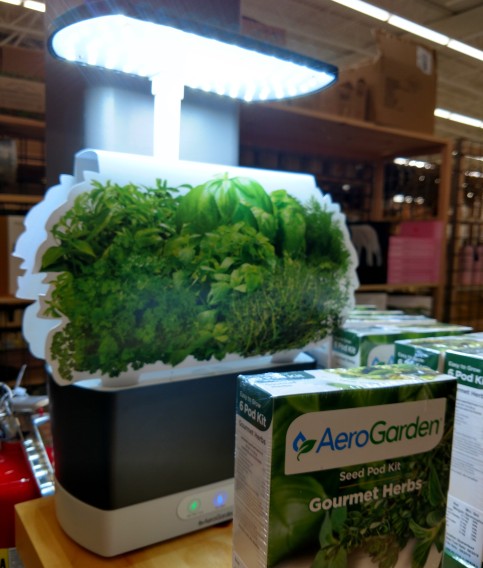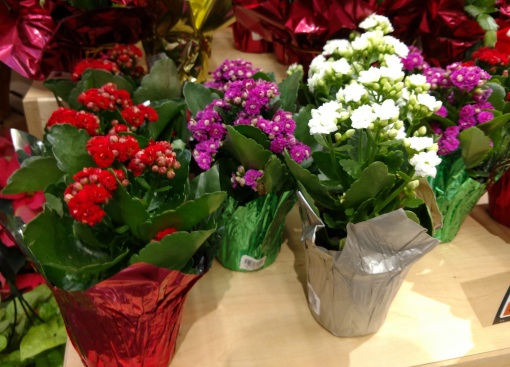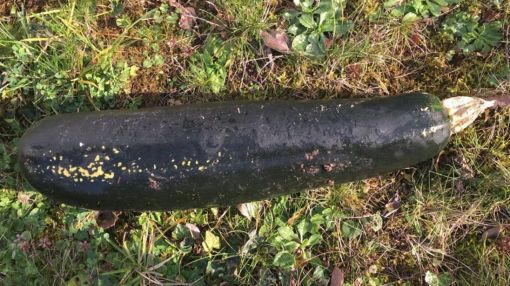It’s that time of the year again: the Christmas holidays are days away. If you are looking for last-minute gifts for the gardener in your life then here are some ideas, including some new trends.
Herb-growing kits are one of the latest trends in indoor gardening. I always bring an herb planter in at the end of October when it gets too cold at night for it to remain out of doors. It generally does very well in a southwest-facing den window for a few months but the reduced sunlight and cooler nighttime temperatures usually cause it to gradually decline in vigor.

Unfortunately, the window in my kitchen faces northeast and therefore is the least desirable growing spot in our house. There are many herb growing kits available now that have growing lights built into the units so that if you or your gift recipient also have a kitchen with a window that gets low light (or no window at all), fresh herbs can still be within reach of your culinary efforts.

There are more than a few lower maintenance herb kits that come in a variety of containers, one of which is sure to fit the décor of any home. Burlap or heavy paper bags come complete with all that is needed to grow flowers and herbs.
The Eggling kits would be a great gift for a young gardener who would really enjoy cracking open the top of the egg to see that it contains everything (except water) that is required to grow herbs, strawberries, or flowers. Colored glass canning jars contain everything from herbs to palm trees!
Another way to grow fresh herbs or micro-greens is a portable water garden that incorporates a fish tank and a plant bed in a unique symbiotic relationship. We gave one of these to our daughter for her birthday in April and have seen the mini-aquaponic system in action. The cut-and-come-again micro-greens that sprout and grow to harvesting size in a week to ten days include radishes, broccoli, arugula, spinach, and wheat grass.
This closed system circulates the water from the fish tank up through the rock garden that sits atop the tank. As this water is rich in fish waste it supplies fertilizer to the plant’s roots. The water that is returned to the fish tank has been cleaned by the plants.
Once the herbs have been grown, whether indoor or out, there are special containers to keep them fresh and assorted culinary tools to prepare them such as a stripper that eases the removal of small leaves from herbs such as rosemary and thyme. A larger variation of the stripper works well with larger-leafed vegetables like kale. A cactus-shaped herb infuser allows any cook to add a bouquet garni to their cooking pot and then easily remove it before serving.
If your gift designee would prefer to adorn their table with flowers rather than grow them then there are plates for every style, from bold orange, green and black tropicals to powder blue backgrounds with delicate cherry blossoms to, my favorite, the high-contrast black and cream Queen Anne’s lace.
And of course, there is the traditional and always welcomed hostess gift of a flowering plant. Poinsettias are not the only way to brighten a home during the winter. Florist’s departments are teeming with an abundance of colorful blooms. Kalanchoe is a succulent houseplant that may be found with white, red, yellow, orange, and fuchsia long-lasting flowers.

Anthurium, with its dark green, heart-shaped leaves and a tall spike of minute flowers that sit above a brightly-colored bract that may be white, pink, or red is a lovely houseplant.

Flowering plants in the Cyclamen species include Cyclamen persicum and C. coum, both of which bloom in the winter and C. repandum which blooms in the spring would be welcome gifts. Cyclamen have beautifully variegated leaves and up-swept flower petals that range from white to soft pink to deep red.

But if you are looking for a flowering plant that comes in a color to match any décor than nothing can top the appeal of the dramatic Phalaenopsis orchid hybrids. As seen in the image below, they are available in a veritable rainbow of colors.

Here’s a suggestion that may also be a final destination for plant and herb refuse: a kitchen compost bin. Now available in many materials and sizes, these bins make composting easy and may only need to be emptied on a weekly basis, perhaps a bit more often if the household is basically vegetarian like ours is or if there is a coffee-lover filling it with used grounds.

If your gardener is also a coffee lover, then these mugs that reflect the current succulent houseplant trend would receive a warm welcome.

Its not too late to shop for your favorite gardener or, if one or two of these gifts happened to catch your eye, then print this off, circle your choices and leave it where Santa may find it!
Susan Pelton
All images by S. Pelton































































